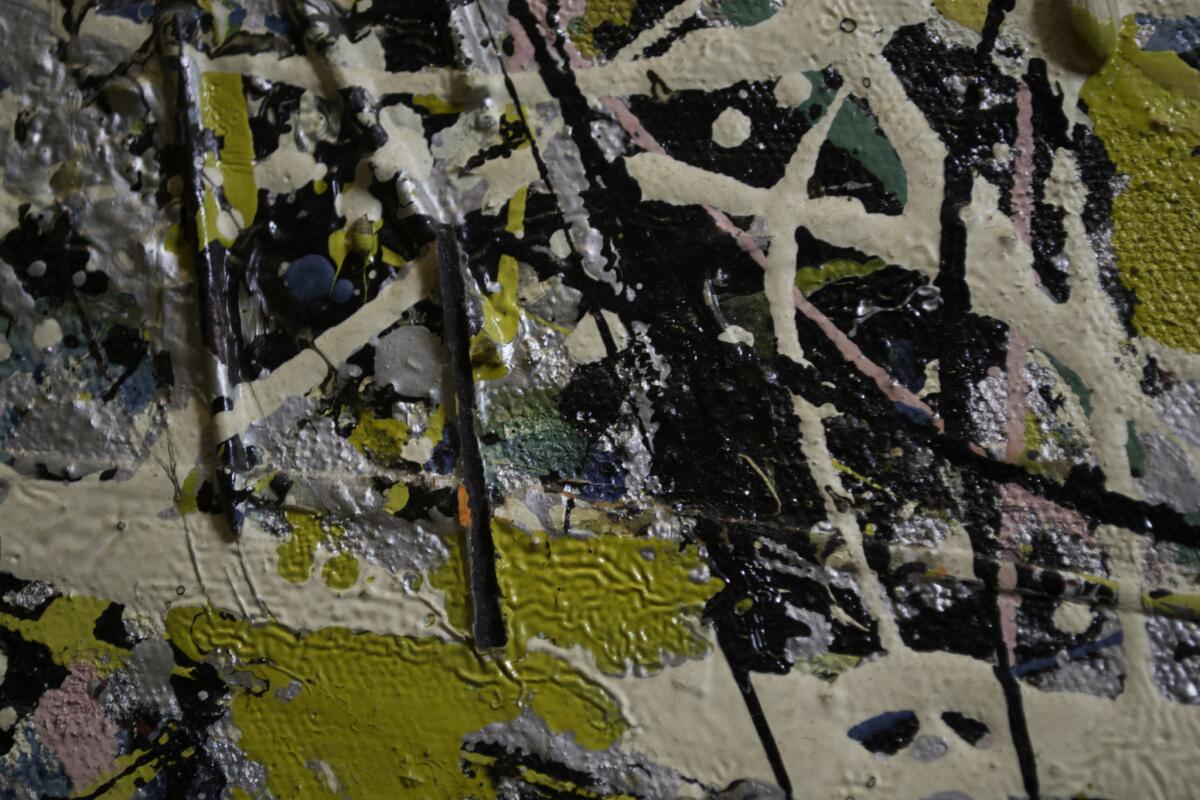Jackson Pollock’s drips and dribbles? Conservation exhibition aims to show there’s a science to that
- Share via
When a museum puts a Jackson Pollock on view, some visitors will inevitably contend that their preschool children could easily dribble, splatter and fling paint on a canvas, creating a masterpiece with equal aplomb as the abstract expressionist artist.
It’s a notion that will be dispelled in public view during the conservation of Pollock’s “Number 1, 1949,” at the Museum of Contemporary Art in Los Angeles.
“Everyone thinks anyone can replicate a Jackson Pollock painting,” said private conservator Chris Stavroudis, recalling a Three Stooges bit in which they spit paint on a canvas. “There’s a lot more to the process.”
MOCA is collaborating with the Getty Conservation Institute to bring that process out of the laboratory and into a gallery, providing a rare peek at the science and art behind protecting a painting.
“When a public viewing was suggested, I thought it was a great opportunity to knock up a few levels of transparency,” said Tom Learner, head of science at the institute, where he spent two years working on Pollock’s “Mural” in 2014. “MOCA doesn’t have a staff conservator, so this was a perfect fit.”

What can visitors expect to see now through Sept. 3?
“Right now, they’ll see me vacuuming dirt and dust,” Stavroudis said of the first phase of conservation, which requires cleaning decades of surface dirt and environmental exposure. A computer monitor will allow him to zoom in and enlarge tiny details, such as a bee stuck in the painting and the outline of where several 2-inch nails were accidentally dropped on the canvas in the lower right corner of the 9-foot-wide canvas.
It’s common during the cleaning process to remove dirt and varnish applied later, said Learner, adding that the cleaning process does not dissolve the paint and pigments beneath it.
The team also studies whether to fill cracks or otherwise restore some of the white, black, gray and mustard-colored tendrils of paint — work that will be anything but child’s play.
♦ ♦ ♦ ♦ ♦ ♦ ♦ ♦ ♦ ♦
‘Jackson Pollock’s Number 1, 1949: A Conservation Treatment’
Where: Museum of Contemporary Art, 250 S. Grand Ave., L.A.
When: Stavroudis will work in the gallery select Thursdays and will be available for Q&A sessions with the public 11:30 a.m.‐noon and 5:30‐6 p.m.
Admission: $8-$15
Information: (213) 626-6222, www.moca.org
See all of our latest arts news and reviews at latimes.com/arts.
ALSO
Times art critic Christopher Knight’s latest reviews
Times theater critic Charles McNulty’s latest reviews
Times architecture critic Christopher Hawthorne’s latest columns
Times music critic Mark Swed’s latest review
UPDATES:
April 4: This article was updated to clarify details of the cleaning process.
The biggest entertainment stories
Get our big stories about Hollywood, film, television, music, arts, culture and more right in your inbox as soon as they publish.
You may occasionally receive promotional content from the Los Angeles Times.







